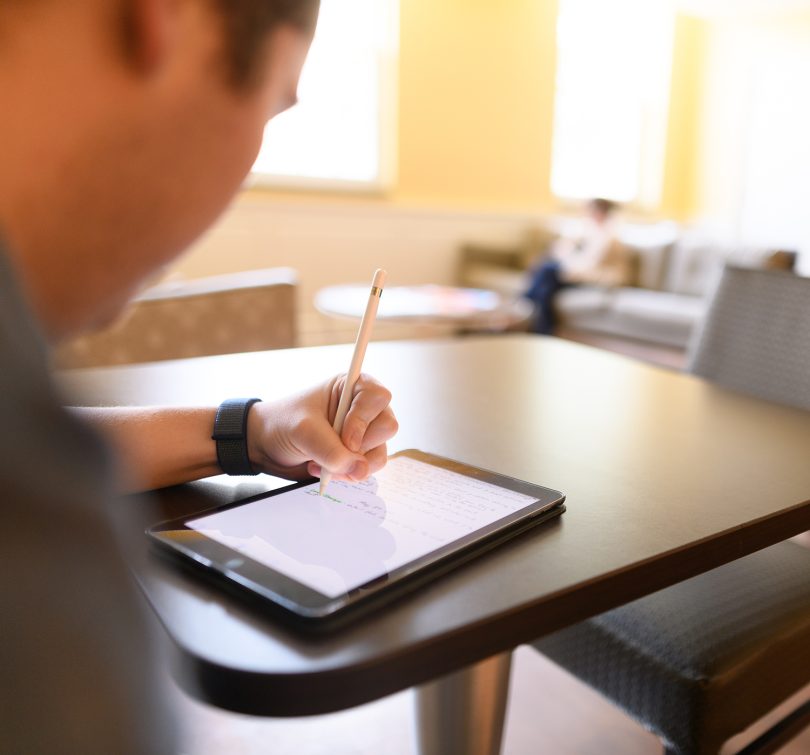
Making notes on students’ assignments used to be a simple affair: They turn in pieces of paper and the professor marks them up and hands them back.
When Transylvania University went to remote learning this year because of the pandemic, this process got a little more complicated. Some faculty were having to print out their students’ work, write on the printout, scan it in and then send back a digital copy.
Just so happens, last year the university’s Digital Liberal Arts initiative bought 20 iPads and Apple Pencils through the Bingham Program for Excellence in Teaching. The idea was to lend them out for digitally enhanced classwork — students studying botany could carry them into the field, or an art class could manipulate a 3D sculpture on the screens, that sort of thing.
While using the iPads for their original purpose isn’t possible at the moment because of remote learning, the iPads and Pencils are going to good use. The school has lent them to professors to do things like make comments on their students’ work without it ever leaving cyberspace.
The long-term goal is to have faculty learn various apps, recognize that they can incorporate iPad technology into their teaching and “see the multifaceted nature of that tool,” said Emily Goodman, an art history professor and co-director of the DLA program.
She’s already been putting iPads to good use in her Survey in Art History course. For instance, students use an augmented reality app from the Netherlands’ Mauritshuis museum to virtually enter Rembrandt’s “The Anatomy Lesson of Dr. Nicolaes Tulp” and get information about various aspects of the painting as they move around the space. It’s an approach that can be more engaging than popping open a textbook.
This kind of application is along the lines the school’s 20 virtual reality headsets, which classes have been using for a few years now — classics students, for example, have donned the Oculus headsets to explore ancient cities.
Going forward, the program’s other co-director, music professor Timothy Polashek, said there will be more of a focus on using iPads for applications like 3D scanning. Plus, they’re trying to recruit more faculty to incorporate the devices into their teaching.
“We’ve got these things — let’s train our faculty so that they can more effectively use them when we’re back in person,” he said.

